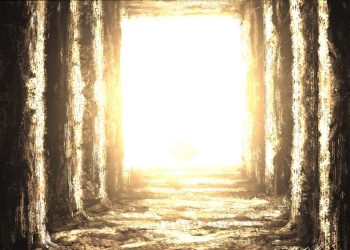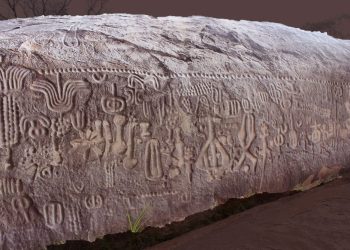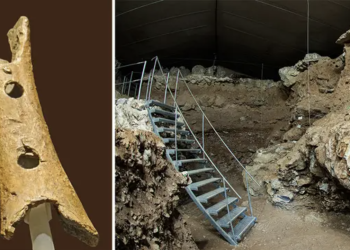Archaeologists and historians have uncovered countless ancient artifacts that defy conventional explanations. These discoveries challenge the general understanding of ancient civilizations, suggesting lost knowledge, advanced technologies, or even alternative interpretations of history. From an ancient mechanical computer discovered in a shipwreck to a map that appears to depict Antarctica centuries before it was officially explored, our list of 7 unexplained artifacts is diverse, to put it mildly.
Get ready as we raise some of our favorite questions once more. Did early civilizations possess more sophisticated knowledge than previously believed? Are there lost chapters of human history yet to be uncovered?
The Antikythera Mechanism – The Ancient Greek Computer
The Antikythera Mechanism has been described as the world’s first known computer. Found in 1901 in a shipwreck off the coast of Antikythera, Greece, this extraordinary device dates back to approximately 100 BCE.
The mechanism consists of a complex system of bronze gears and dials enclosed in a wooden case. When operated, it could predict astronomical positions, eclipses, and planetary movements with remarkable accuracy.
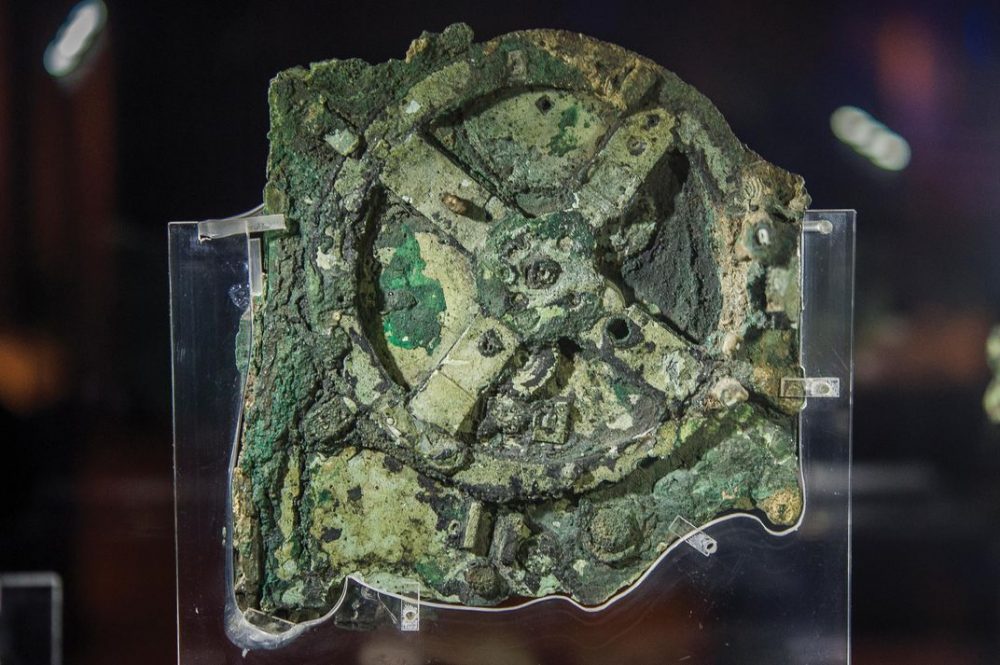
To say the least, such precision suggests an advanced understanding of mathematics and engineering, far beyond what historians believed was possible for the ancient Greeks.
Scholars long assumed that mechanical gearing of this complexity only emerged in the Renaissance, more than 1,400 years later. The presence of the Antikythera Mechanism in antiquity forces historians to reconsider the technological development in the ancient world.
Academic Insights & Theories
A 2006 study published in Nature used X-ray imaging to analyze the device, confirming its intricate design and function. Researchers determined that it likely modelled the motions of the Sun, Moon, and possibly the planets.
Find out more about the Antikythera Mechanism in our dedicated article on the subject.
The Baghdad Battery – Did Ancients Produce Electricity?
In 1938, archaeologist Wilhelm König unearthed a puzzling artifact near Baghdad. He discovered a 2,000-year-old clay jar containing a copper cylinder and an iron rod. This simple yet unusual object, estimated to date from 250 BCE – 224 CE, became known as the Baghdad Battery due to its resemblance to modern electrochemical cells.
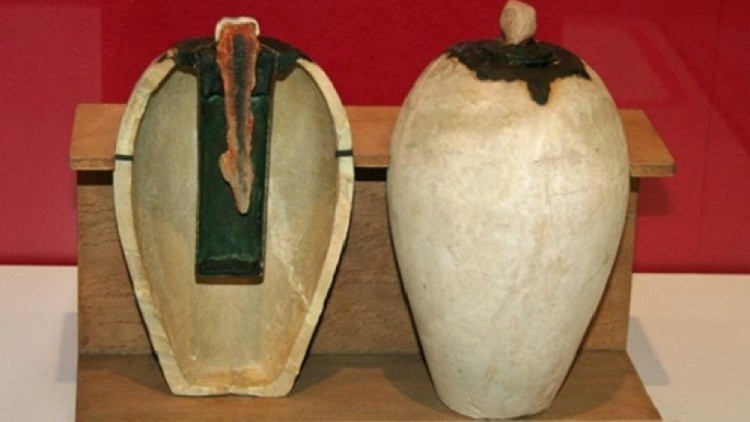
The structure of the jar makes it look like a primitive battery. And the best part is that scientists tested it. When filled with an acidic liquid (such as vinegar or grape juice), it could produce a weak electric current.
This has led some researchers to speculate that ancient civilizations may have used it for electroplating metals, medical treatments, or religious purposes.
Academic Insights & Theories
Experiments conducted by Dr. Arne Eggebrecht (late 1970s) at the Roemer and Pelizaeus Museum in Germany demonstrated that a replica of the Baghdad Battery could indeed generate a small voltage when filled with an acidic solution. However, we cannot provide more context or confirm these claims, as no direct records of the experiments exist in 2025.
Find out more about the Baghdad Battery in our dedicated article on the subject.
The Piri Reis Map – Could It Be Showing Antarctica?
The Piri Reis Map is a navigational chart created in 1513 CE by Ottoman cartographer Piri Reis. What makes this map particularly fascinating is its depiction of the South American coastline and a landmass resembling Antarctica – 200 years before the continent was officially discovered.
The map appears to illustrate the Antarctic coastline without ice, which has led some researchers to speculate that it was drawn using ancient sources dating back to a time when Antarctica was ice-free -possibly pre-Ice Age civilizations.
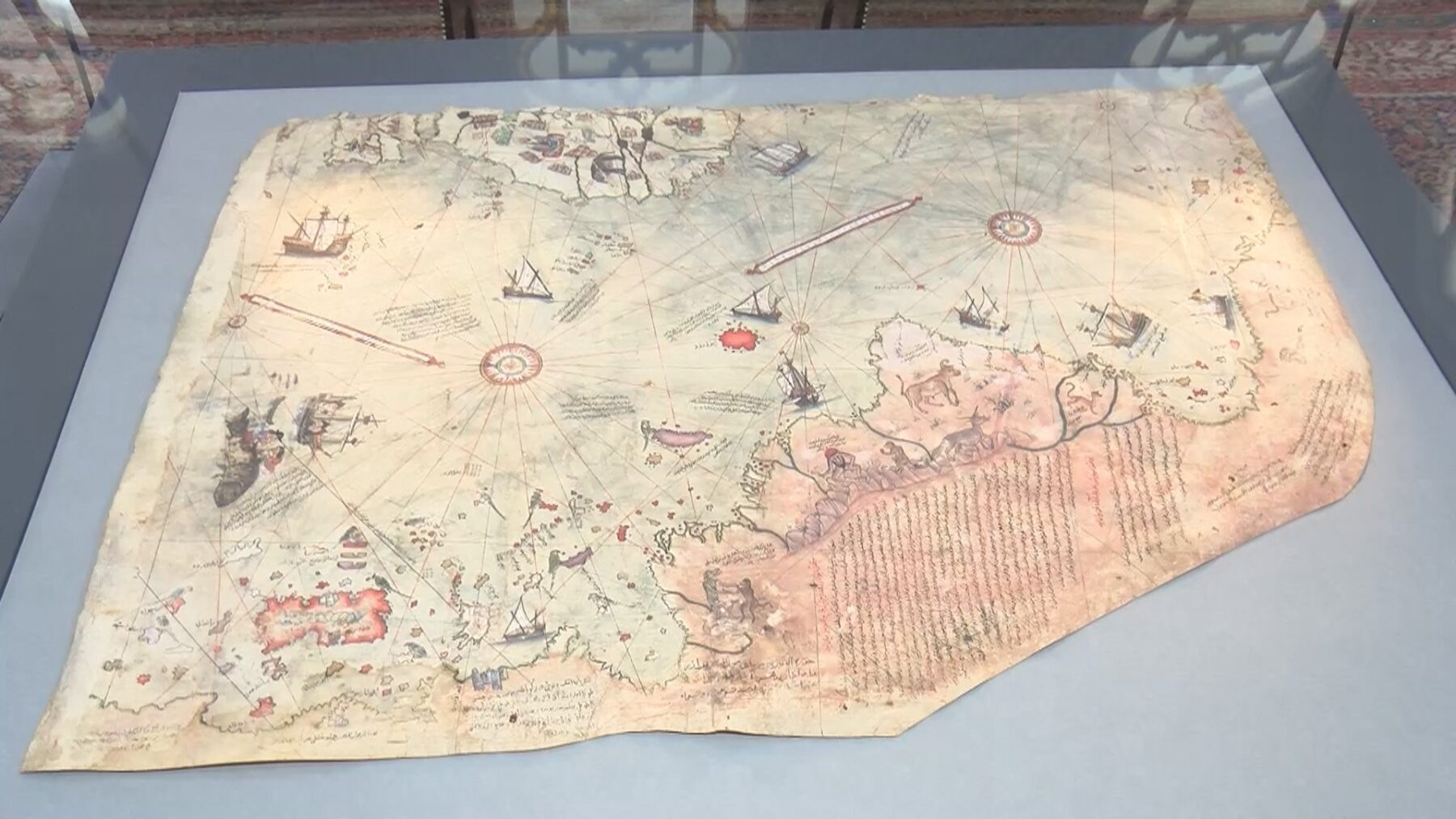
Many historians believe the map does not actually depict Antarctica but rather a distorted representation of Patagonia (southern South America). They argue that Renaissance cartographers often exaggerated coastlines due to limited exploration data.
Piri Reis himself stated that he compiled the map from earlier sources, including maps from ancient Greece and lost charts from Christopher Columbus.
Some theorists, such as Charles Hapgood, argue that the map preserves knowledge from an advanced civilization that existed thousands of years ago.
Mainstream scholars counter this claim, suggesting that what appears to be Antarctica may instead be a misinterpretation of South America.
Find out more about the Piri Reis map in our dedicated article on the subject.
The Voynich Manuscript – A Book Full of Lost Knowledge
Discovered in 1912 by an antiquarian book dealer by the name of Wilfrid Voynich, the Voynich Manuscript is a 240-page book filled with bizarre illustrations and written in an unknown script. Estimated to date back to the early 15th century, the manuscript remains one of the biggest linguistic mysteries in history.
The Voynich Manuscript is written in a completely unknown language that has resisted all decryption attempts. It features illustrations of unidentified plants, astronomical diagrams, and nude female figures immersed in strange tubes and pools, suggesting a mix of botanical, medical, and cosmological knowledge.
Some scholars believe the manuscript is an elaborate hoax, possibly created during the Renaissance to deceive wealthy collectors. Carbon dating has confirmed its authenticity as a medieval text.

Academic Insights & Theories
A 2016 study by the University of Alberta used artificial intelligence to analyze the text, identifying Hebrew as a potential base language. Since then, however, translation attempts have remained inconclusive.
In 2019, Dr. Gerard Cheshire from the University of Bristol claimed to have deciphered the manuscript, suggesting it was written in a proto-Romance language, an early form of Spanish, Italian, and other Latin-derived languages. However, many linguists dismissed his findings.
Find out more about the latest findings in our dedicated article on the Voynich Manuscript.
The Stone Spheres of Costa Rica – Ancient Precision Engineering?
Hundreds of perfectly round stone spheres, some weighing up to 15 tons, have puzzled archaeologists since their discovery in the 1930s. Scattered across Costa Rica’s Diquís Delta, the artifacts, dated between 600 and 1000 CE, are attributed to the Diquís culture, an ancient civilization that vanished long before the Spanish conquest.
The precision with which these spheres were shaped despite the absence of advanced tools suggests an exceptional level of craftsmanship. Many are arranged in clusters, alignments, and geometric patterns, leading some to speculate on their potential astronomical or ceremonial significance.

Some researchers argue that weathering and natural processes may have helped shape the spheres over time. However, most experts agree that the Diquís people intentionally carved them.
But the main questions remain:
- What tools and techniques did the ancients use to carve and transport these massive spheres?
- Were they aligned for astronomical purposes, or did they serve a different function?
- Could other similar ancient artifacts exist in the region, still undiscovered?
The Saqqara Bird – An Ancient Egyptian Glider?
Discovered in 1898 within a tomb in Egypt, the Saqqara Bird is a small wooden object resembling a modern airplane. Estimated to date from around 200 BCE, it has sparked speculation that the ancient Egyptians may have understood aerodynamics long before the Wright brothers.
Unlike other animal figurines found in Egyptian tombs, the Saqqara Bird has a straight, fixed-wing design, resembling modern gliders. Some researchers argue that this artifact suggests ancient knowledge of flight principles, while others believe it is merely a ritualistic or symbolic object.
Some scholars argue that the Saqqara Bird lacks essential flight components, such as a tail stabilizer, making it unlikely that it represents an actual aircraft. Others believe it may simply be a stylized representation of a falcon, a bird associated with Horus.
Academic Insights & Theories
In 2006, Egyptian scientist Dr. Khalil Messiha proposed that the Saqqara Bird was a model for an actual flying device, suggesting the Egyptians may have experimented with flight.
Aerodynamic tests on replicas suggest that the artifact could achieve lift under certain conditions, implying that the ancient Egyptians may have possessed some understanding of flight mechanics.
The Dropa Stones – Neglected Evidence of Ancient Extraterrestrials?
In 1937, Chinese archaeologist Chi Pu Tei reportedly discovered hundreds of stone discs in caves in the Bayan Har Mountains (bordering Tibet and China). These discs, nowadays known as the Dropa Stones, are said to date back 12,000 years and feature tiny, spiral-shaped inscriptions that some claim are of extraterrestrial origin.
When translated (allegedly by Chinese researcher Tsum Um Nui in the 1960s), the inscriptions were said to describe a spaceship that crashed in the mountains and the subsequent interaction between the aliens and a local tribe.
The Dropa Stones have never been scientifically verified, and there is no academic consensus on their authenticity. Some ufologists claim that the ancient artifacts are evidence of extraterrestrial contact, while sceptics argue that the entire story is a modern myth.
No physical evidence of the Dropa Stones exists today, leading many to believe they were either lost, destroyed, or never real to begin with. The few photographs that exist are of low-quality and their origin remains unconfirmed. Some researchers believe the Dropa story was fabricated in the mid-20th century, with no mention of the stones appearing in any early archaeological records.
See the alleged rare photos of the Dropa Stones in our dedicated article here.
To sum up, the idea of rewriting history will always be considered controversial. Yet, unexplained artifacts like the Antikythera Mechanism and the Baghdad Battery suggest that ancient people were capable of extraordinary feats of engineering and knowledge.







